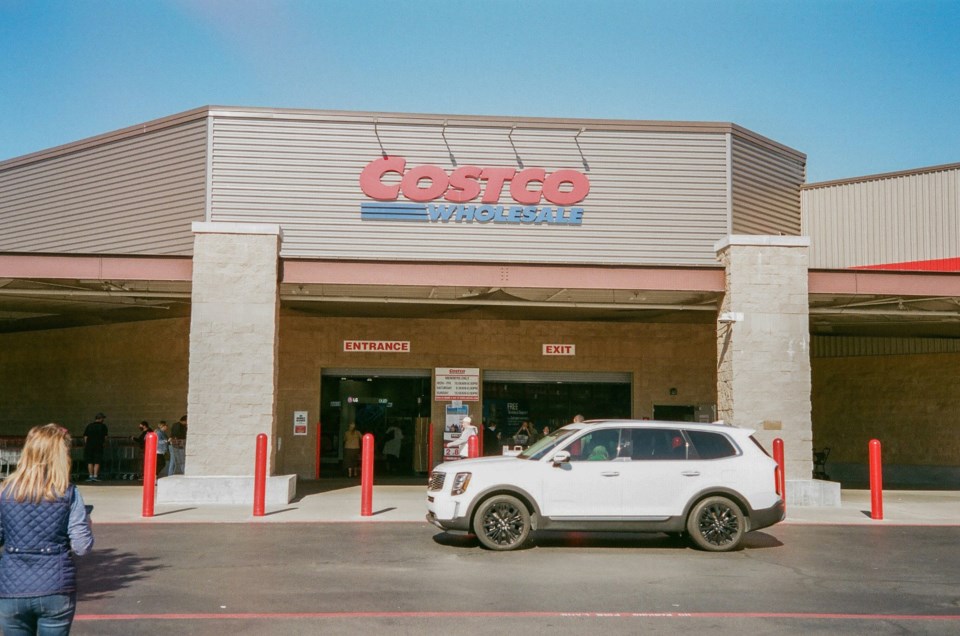Costco Canada is doubling down on its commitment to membership exclusivity, signalling a shift towards a more disciplined and controlled shopping environment. The retail giant is currently piloting advanced membership card scanners at several locations across Ontario, Alberta, Saskatchewan, and British Columbia.
These scanners, positioned at store entrances, mandate that shoppers authenticate their membership before entry. For non-members, access is restricted unless accompanied by a valid cardholder.
Nevertheless, there remain limited avenues for non-members to gain entry. A one-day pass, obtainable twice annually, offers temporary access, while those with gift cards or seeking pharmacy services can also bypass the membership requirement.
This strategic move aligns entirely with Costco’s distinct and highly profitable business model. Unlike traditional retailers, Costco derives a substantial portion of its profitability from membership fees rather than retail markups. Costco has effectively transformed its customer base into a revenue stream by monetizing access to its vast inventory – predominantly financed by suppliers. With over five million active members in Canada, the company generates approximately $325 million annually from membership fees alone, before a single product is sold. This speaks volumes about the financial acumen behind Costco’s operations.
From a food retail perspective, Costco has made significant strides in recent years. The company has augmented its in-house food processing capabilities, expanded its offerings of locally sourced products, and enhanced the quality of its Kirkland Signature line. Once regarded as a mediocre food retailer, Costco has become a formidable contender across numerous categories. This is particularly evident with its two iconic loss leaders: the $1.50 hot dog, positioned strategically at the entrance, and the $7.99 rotisserie chicken, located at the far end of the store – both designed to drive foot traffic and maintain customer loyalty.
Despite operating only 109 locations across Canada, Costco’s food sales are competitive with those of Walmart Canada and Metro, which manage 403 and over 900 stores, respectively. This underscores Costco’s operational efficiency and its ability to drive significant sales volume through a relatively limited footprint.
Costco’s approach to expansion in Canada has been characterized by prudence and deliberation. Historically, the retailer has opened just one new store every two to three years. However, the pace appears to be accelerating slightly, with new stores slated for Surrey, BC, and Oakville, Ontario, within the next two years. These developments are eagerly anticipated, as existing locations frequently experience high traffic, with customers navigating the sprawling 146,000-square-foot warehouse searching for deals.
Introducing membership card scanners is unlikely to dampen revenue from membership fees. Earlier this year, Costco announced an upcoming increase in membership fees, effective this fall. Individual, business, and business add-on memberships will see a $5 annual increase, while executive memberships will rise by $10.
Costco’s ability to maintain customer loyalty is mirrored by its strong appeal to investors. The company’s stock, currently trading at approximately US$862 per share, has appreciated 54.4 percent over the past year. Speculation regarding a potential stock split has only heightened investor interest. Such a move would be consistent with the practices of other retail giants like Walmart and Amazon, whose shares are priced well below US$200.
While the markets anticipate further strategic manoeuvers, one aspect of Costco remains steadfast: its quiet yet unwavering commitment to operational excellence. With a near-zero advertising budget, Costco continues executing its strategy with precision and restraint that is rarely seen in the retail sector, embodying the adage of “steady as she goes.”
Dr. Sylvain Charlebois is senior director of the agri-food analytics lab and a professor in food distribution and policy at Dalhousie University.
©
The commentaries offered on Â鶹´«Ã½AV.ca are intended to provide thought-provoking material for our readers. The opinions expressed are those of the authors. Contributors' articles or letters do not necessarily reflect the opinion of any Â鶹´«Ã½AV.ca staff.




